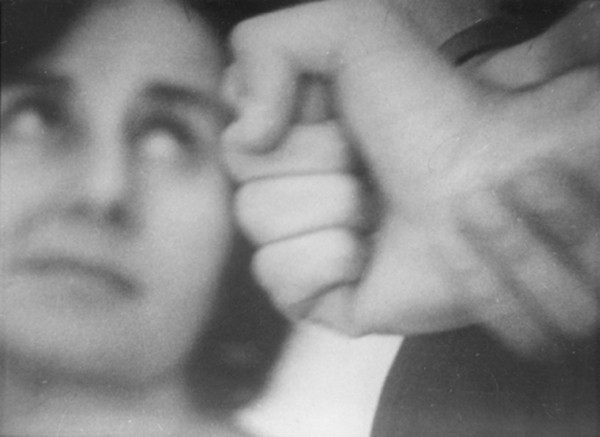
Storm de Hirsch's "Goodbye in the Mirror" on 16mm
Films
- Read More
 ExperimentalNarrative
ExperimentalNarrativeGoodbye In The Mirror
Storm De Hirsch16mm, black and white, sound, 80 minRental formats: 16mm, 35mm
Description
Join us at the FMC Screening Room (475 Park Avenue South, 6th Floor) on Friday, June 16th, 2023, at 7pm, for a rare showing of the only feature film Storm de Hirsch ever made, presented by Matt McKinzie!
In 1964, after years of working as a poet and critic in New York and only two projects into what would become a prolific and highly influential experimental filmmaking career, Storm de Hirsch traveled to Rome to direct her first — and only — feature-length movie. A black-and-white, live-action drama produced on a budget of $20,000, Goodbye in the Mirror follows the lives of three roommates — New Yorker Maria, Londoner Berenice (whose actual name is Pamela), and Swede Ingrid — all of whom engage in a series of volatile relationships while living in Italy and teaching a group of young men how to speak English.
There isn’t much of a “story” in Goodbye in the Mirror and de Hirsch’s aesthetic choices are often confounding. The film’s dialogue, dubbed entirely in post-production, rarely syncs with the movements of the actors’ lips. Cinematographer Giorgio Turi’s handheld camera is a whirlwind of activity: whipping from one moment to the next, capturing actors’ countenances in inexplicable, ultra-tight closeups, and appearing within the film’s universe (e.g. in mirrors) either as an act of self-referential creation or a technical blunder. As for the characters? Let’s just say, with their sparring and irascibility, they’re less than admirable.
But for all its flaws, watching Goodbye in the Mirror is an indelible experience. It’s almost as if someone typed “Chantal Akerman by way of John Cassavetes by way of Doris Wishman by way of Agnès Varda” into an AI generator. There are shades here of Jeanne Dielman, 23 quai du Commerce, 1080 Bruxelles (1975), Faces (1968), Bad Girls Go to Hell (1965), and Clèo from 5 to 7 (1962). One can even spot influences from Jean-Luc Godard’s Breathless (1960) and Michaelangelo Antonioni’s Red Desert (1964). De Hirsch also seems to prophesy the future of feminist filmmaking, with moments that foreshadow pivotal scenes in Robert Altman’s 3 Women (1977) and Claudia Weill’s Girlfriends (1978). At the same time, Goodbye in the Mirror is in a league of its own: utterly unclassifiable and a cinematic “curio” in every sense of the word.
Adding to the film’s bizarreness is its general lack of availability. Following Goodbye in the Mirror’s premiere at the 1964 Cannes Film Festival and a brief theatrical engagement in New York in 1965 — whereupon it was embraced by the avant-garde film community (Shirley Clarke called it the first “real woman’s film”) and panned by the mainstream press — it sunk into obscurity. De Hirsch turned her attention to short, typically color, etched and hand-painted work (like 1965’s psychedelic Peyote Queen, a favorite of Jonas Mekas’) and rarely screened her sole feature following its initial run.
Goodbye in the Mirror has never been digitized or released on home video. It’s only available today thanks to 16mm and 35mm prints at the Film-Makers’ Cooperative, and a 16mm print at LUX Moving Image in London. Thus, to see it on the big screen is a rare (if somewhat bewildering) opportunity.
(Adapted from my essay Storm de Hirsch’s Utterly Unclassifiable Feature Film ‘Goodbye in the Mirror’, published in PopMatters on April 3, 2023).
—Matt McKinzie